How to Make Bone Broth

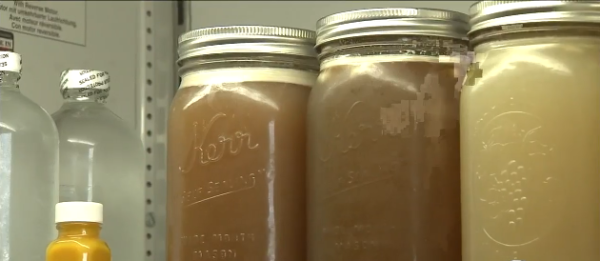
My readers and my students are very in the know when it comes to food trends, especially the healthy ones. So I’m sure you have all heard about bone broth and how it’s taking over the world. It’s the newest thing! It’s revolutionary! So funny. Bone broth is no trend, but in fact something that has been consumed for generations. But low and behold some trendy bone broth restaurants open up in the hottest neighborhoods of NYC and suddenly everyone wants in. I actually saw an acupuncturist over 20 years ago that sent me home with a prescription for homemade long-simmered beef broth. She said that was the secret all of the celebrities that she treated were using to stay looking so young.
So even though it’s trending, people are still confused about what exactly bone broth is. Very simply, it is a stock made from bones (chicken, beef, pork, lamb or a combo) which have been simmered for a really long period of time. Think 18-36 hours! In this longer time frame, the bones really break down and start to disintegrate into the broth, thereby providing even more health benefits, i.e. collagen, immune-boosting compounds, and gut-healing gelatin.
So how does one even go about making this miracle liquid?? Well, you start with bones as opposed to meaty pieces. So you’re not using a whole 4 pound chicken here. You would use 4 pounds of bony chicken parts, and the bonier and “jointier,” the better. I personally prefer chicken, but you can use any combination of chicken, beef, pork, etc. The chicken bones I prefer to use are the feet, backs and wings — lots of collagen there! I buy these from the butcher at Whole Foods or from the chicken rancher at my local farmers market.
If you are using beef bones you will first need to roast them in the oven. However, with chicken the bones are ready to go straight into the pot- or slow cooker- and cover with water. I am sharing how to do this in the slow cooker is because I don’t really think it is realistic for anyone to be able to leave a simmering pot on their stove for 36 hours. The slow cooker solves this problem and can just simmer away safely while you carry on with your life.
As those bone are being simmered, they are being broken down and all of the minerals including collagen and glucosamine that are sold as (very expensive!) supplements. This leaves us with a broth that is full of immune-boosting, healing, pain healing, anti-inflammatory goodness that is easily absorbed and accessible to our bodies.
You can use bone broth in any recipe that calls for stock or broth. But it is also wonderful to consume bone broth as you would coffee or tea- in a mug which you can sip slowly. I’ve been to some places which offer flavorings such as turmeric, cayenne, ginger and scallions to make your broth taste more interesting.
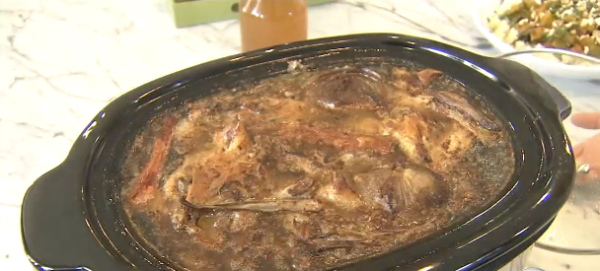
Here are the basics for making a bone broth:
-Use BONES. Not meaty pieces like breasts or thighs. For chicken that would mean the super bony parts such as the carcass, necks, backs, wings and even feet if you can get your hands on them. If there is skin on those pieces, that’s fine. Such chicken parts can be purchased at Whole Foods or your local butcher. Or, if you can, try and keep the carcass from after you roast a whole chicken or the bones from your chicken legs, wings etc. You can stockpile your bones and carcasses in the freezer and then when you are ready to make stock you can put them directly in, no need to defrost.
I add a few vegetables, as I think it makes the broth tastes more delicious. An onion, 2 carrots and 2 stalks of celery is my norm, but you don’t have to add any vegetables if you don’t want to.
-Use COLD water to start- This helps to draw the most flavor from the bones.
-Use apple cider vinegar in your stock. This helps to pull maximum minerals from the bones.
-Simmer for AT LEAST 18 hours. If you are really going for it, 36 hours will make the most golden, delicious and rich broth.
Bone broth lasts for up to 4-5 days in your refrigerator or up to 3 months in the freezer. Check out this post for how to properly freeze broth, especially if you would like to freeze in glass.
I recently did a tv segment with Lori Corbin, KABC’s Food Coach, about bone broth. You can watch below. The only correction that should be made is that Lori says to cool, skim fat, strain and enjoy. Instead, you should strain, cool and then skim the fat once it has solidified after being refrigerated.
- 3 ½ pounds bony chicken parts, such as backs, necks, wings and/or feet
- approximately 5 quarts cold water*
- 1 Tablespoon apple cider vinegar**
- 1 large onion, peeled and cut in half
- 2 carrots, cut if necessary (you can leave the peel on, just make sure they are scrubbed clean)
- 2 celery stalks, cut if necessary (try to use the leafy parts of celery, as they add lots of flavor)
- Place the chicken parts and vegetables in a slow cooker and add the cold water and vinegar. Cover with the lid.
- Set the timer to low for as long as your slow cooker will go, but a minimum of 18 hours.
- Check periodically to skim off any foam that rises to the surface and continue cooking for 18-36 hours, resetting your slow cooker if the maximum time is less than 36 hours.
- Turn off the heat and strain into a large heat-proof bowl. You may need to use a large strainer initially and re-strain it with a fine mesh sieve to remove any smaller particles. Allow to cool before refrigerating.
- Refrigerate, covered.
- The next day, skim off the congealed fat at the top.
- Refrigerate the stock for up to 5 days or freeze for up to 3 months.
- If I consume bone broth as a drink, I'll add a pinch of sea salt for flavor, but other options include ginger, green onions, hot sauce, even turmeric!
If you don't have a slow cooker and want to do this on the stove, bring to a boil over high heat and reduce to a very gentle simmer and simmer until you have to go out or if you want to go to sleep. Then transfer pot, covered, to a 250 degree oven and allow to simmer in the oven as long as you wish.
Related Recipes
Comments
Signup to receive updates about new recipes and more
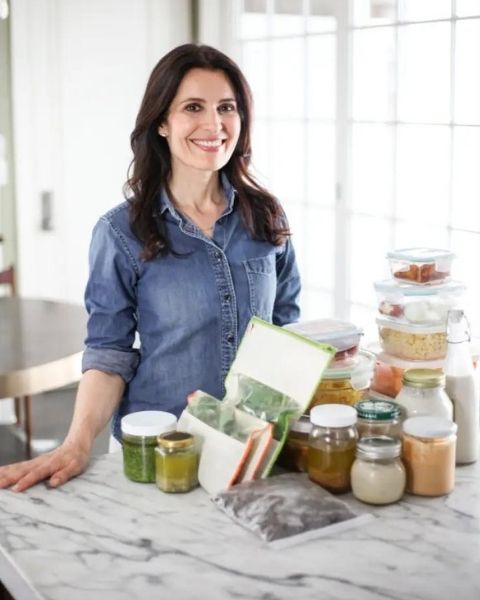
I come from a large Italian-American family with 28 first cousins (on one side of the family!) where sit-down holiday dinners for 85 people are the norm (how, you might ask – organization! But more on that later …).
Some of my fondest memories are of simple family gatherings, both large and small, with long tables of bowls and platters piled high, the laughter of my cousins echoing and the comfort of tradition warming my soul.


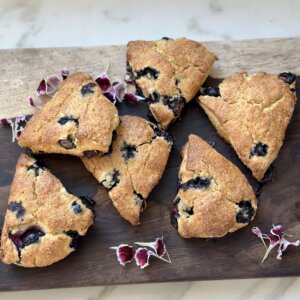
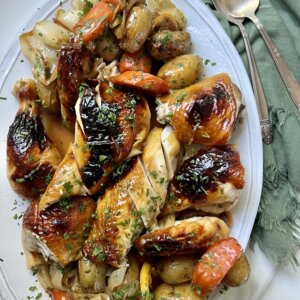
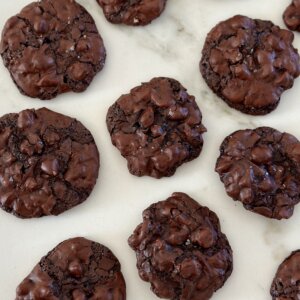
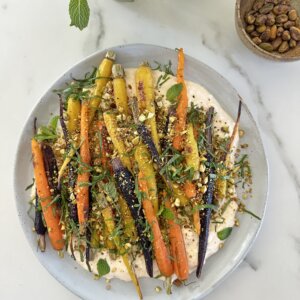
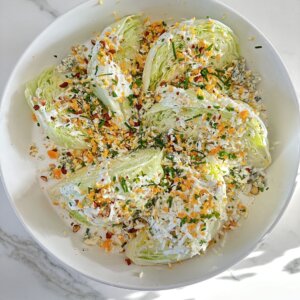

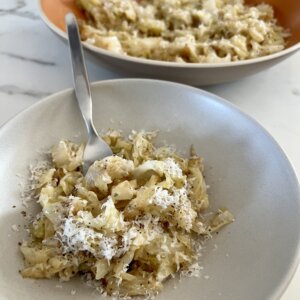
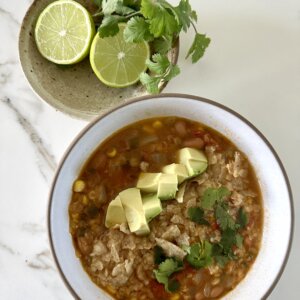
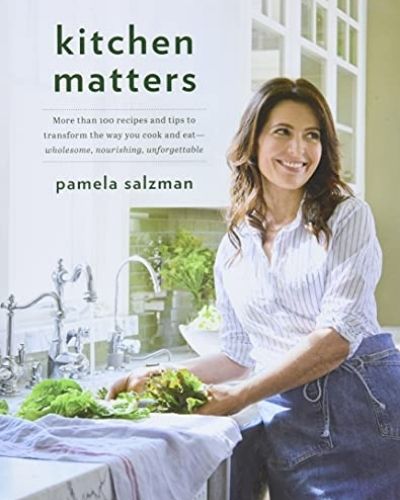

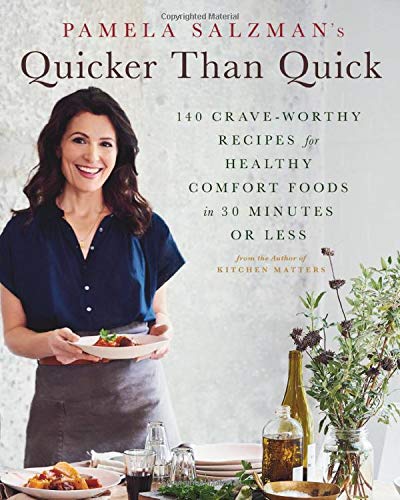
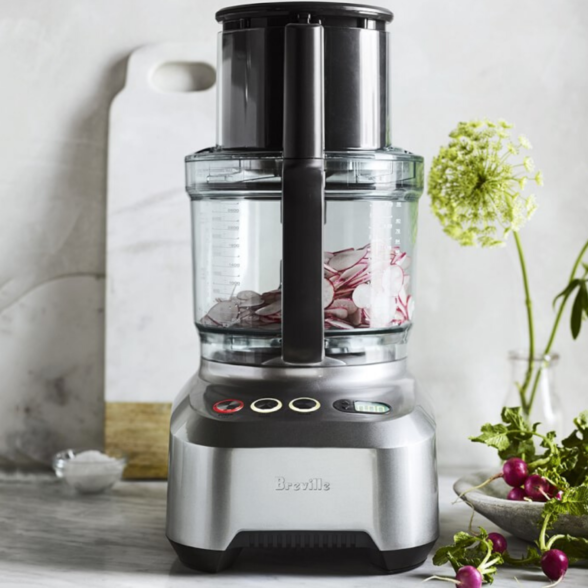
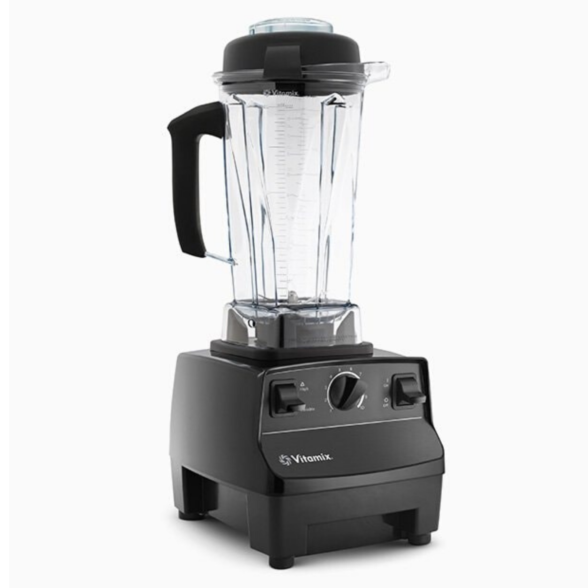
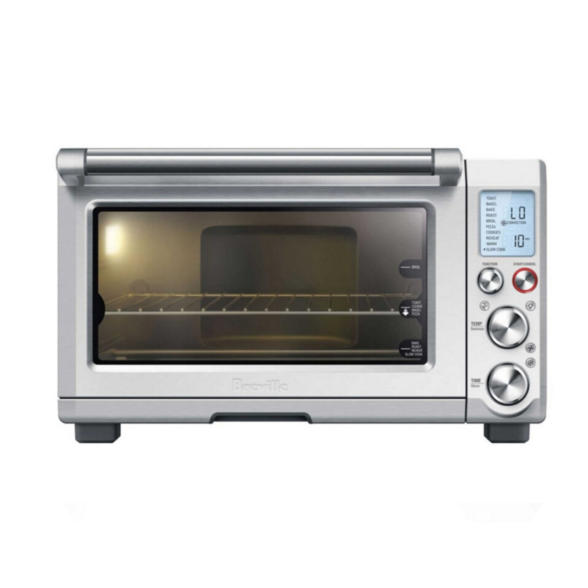
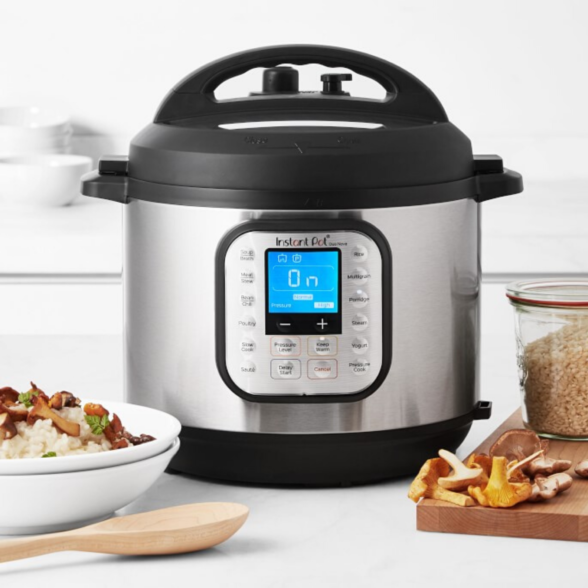
20 Comments
Hi Pamela! Love this post. One question I’ve always had about bone broth: Many recipes, including my 20th century “Joy of Cooking,” say to “skim the ‘impurities’ off” the top at some point shortly after it begins to boil. What the heck does that mean? I have never understood. Also, my MIL is a big cook and amateur nutritionist who thinks the fat should be left, not skimmed. (She generally believes even animal fat is full of great nutrients as long as its pasture-raised and that it makes the nutrients in plant foods more bioavailable.) Is leaving the fat OK with you? Thanks and <3
Great question! To skim off impurities means to scoop out the dirty looking foam (usually when cooking raw meat) that rises to the top when the liquid starts to boil. It’s not harmful for you, it’s just visually unappealing and removing this helps produce a clearer broth.
While that may be true about the fat, it’s also about mouthfeel. I find that when I leave the fat, the broth has a greasy mouthfeel, so I personally prefer to remove the fat. With that said, there’s nothing wrong with using it. You can use the fat to start the base of your soup or to roast vegetables.
Does it matter of the bones were previously cooked or not?
It does not matter. Although if you want to make a bone broth with beef or lamb bones, I would suggest roasting them ahead of time for better flavor.
Pamela
I’m making my first batch of bone broth tonight. My slow cooker only holds 3 quarts and I want as much broth as I can because I’m meant to drink it every day. Can I add water over time while it’s cooking? 0r should I put on the stove/ oven technique?
As long as you keep your slow cooker covered and on LOW, there should be absolutely no evaporation. You’re better off doing it in the slow cooker for that reason + the temperature stays much steadier.
Hi Pamela – I went for the gusto and cooked my bony chicken parts for 36 hours on low in the slow cooker. The broth was super-rich, very dark and delicious, but it didn’t yield much liquid. I followed your instructions to the letter, but I ended up with only about a cup of broth. Any ideas what I am doing wrong? Should I add more water along the way? I just bought more bones to make another batch, but I want to get your advice before I press “start”!
Thanks so much!
I’m really glad you tried, and I want to help. Either you forgot to add the 5 quarts of water or you didn’t cover the slow cooker. There’s no way that 5 quarts of water would evaporate if the slow cooker had been covered. And now I see that I did not specify that the slow cooker should have the lid on it and I apologize. I will make that correction now. For the future, any time you use a slow cooker, the lid must be on, no exceptions. So sorry!
Oh interesting. I did have the lid on the whole time, but I notice that the lid fits loosely, not a tight seal. It actually seems like it was designed that way. Do they usually fit with a tight seal? Maybe it’s time for a new slow-cooker. Mine is crock pot brand.
I can’t say for sure since I am not there, but if your slow cooker releases steam while it is on, there’s something wrong. There should be no evaporation.
Hi Pamela: how do I make bone broth on the stove, not using a slow cooker? Obviously I don’t want to keep my stove on at night or when I am not home. Cook during the day and turn off at night and then turn back on in the morning? Put it in the oven at night on low? Thanks so much for your guidance.
Hi Suzi, I’m excited for you to try to make bone broth! I just added some notes to the bottom of the recipe regarding stovetop/oven preparation. Please let me know if you have any other questions. Thanks!
also total fan girl over here!! i just started making bone broth tonight. using your numbers in my 6.5 qt slow cooker, the chicken is sticking out of the liquid. the cover of the slow cooker goes over fine, however i’m concerned about the exposed chicken bones. let me know if you think this is ok. thanks!!!
No problem!
Hi Pamela ! I’m on my 24th hour of my first batch of chicken bone broth. Thank you for the inspiration. I’m wondering if it’s ok to add salt? As of now, it’s kind of tasteless …
Absolutely you can add salt now. So excited you’re making bone broth!!
First I want you to know how much I appreciate all you share on your blog! Love the weekly meal planner and have enjoyed the recipes I have tried!
I especially appreciated this blog about bone broth … I, like many, have not understood the difference between stock and bone broth … Your careful explanation has been wonderful to read and has inspired me to try making some bone broth in the next week or so.
Thanks so much … A reader from NH!
Thank you, Sue. That was a very kind comment. I appreciate it.
Pamela–how does bone broth made from chicken differ from stock? Thanks–Susan
The difference is two-fold. Bone broth is simmered for much longer than stock: 18-36 hours versus 5-6 hours. Bone broth utilizes the bony parts of the animal versus stock which can use bony parts or meaty parts. I hope that helps!